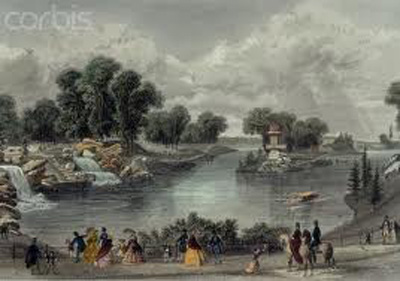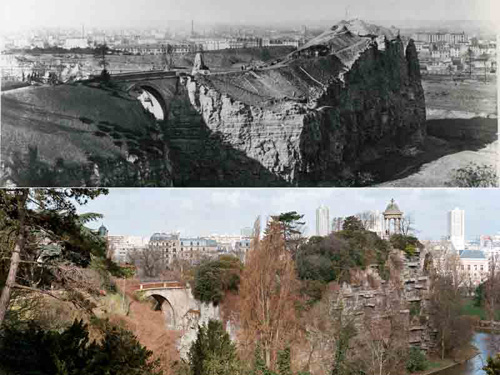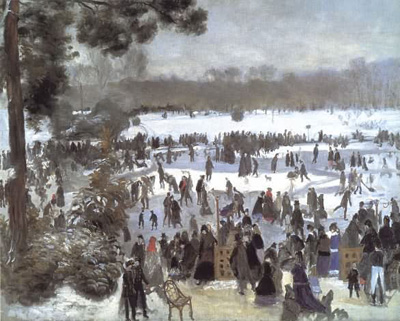Colin Jones, Paris: A History
Haussmannism and the City of Modernity
1851-89, p.313
Parks and Greenspaces
These latter developments highlighted a further feature of the Haussmannian programme, namely the concern for green space. The notion that green space played the role of the lungs for the urban organism was one of the Emperor's hobby-horses, based on his love for and envy of London's parks. In 1852 he donated the Bois de Boulogne to the city, and in 1860 followed up with the gift of the Bois de Vincennes (both amenities had been state property hitherto). The municipal engineer Alphand was instructed to make English-style parks of both. In the Bois de Boulogne, for example, some 95 kilometres of pathways were laid out, endless flower beds were provided and two lakes dug. These two extra muros [outside the walls]parks were at the apex of a complex hierarchy of green spaces. Within the bounds of the city, Napoleon modernized the Luxembourg and Tuileries gardens, developed the Parc Monceau, opened the park of Montsouris . . . and created the Buttes-Chaumont [another major park] on the site of the old medieval gibbet [gallows]of Montfaucon. Over a score of city squares were created too, including the Square du Temple and the Square de SaintJacques-de-la-Boucherie. Then there were boulevards and approach roads -- in 1873 these were graced by over 100,000 trees.

The Bois de Boulogne in the 19th Century (The large park to the west of the city)

The park at Buttes-Chaumont was built on the site of the old gallows in Paris. It was landscaped with rubble from the demoliton generated by Haussmann's reshaping of Paris. Here are photos of the same spot as the park was being created and today.
Pierre-Auguste Renoir, Skaters in the Bois de Boulogne (1868)
